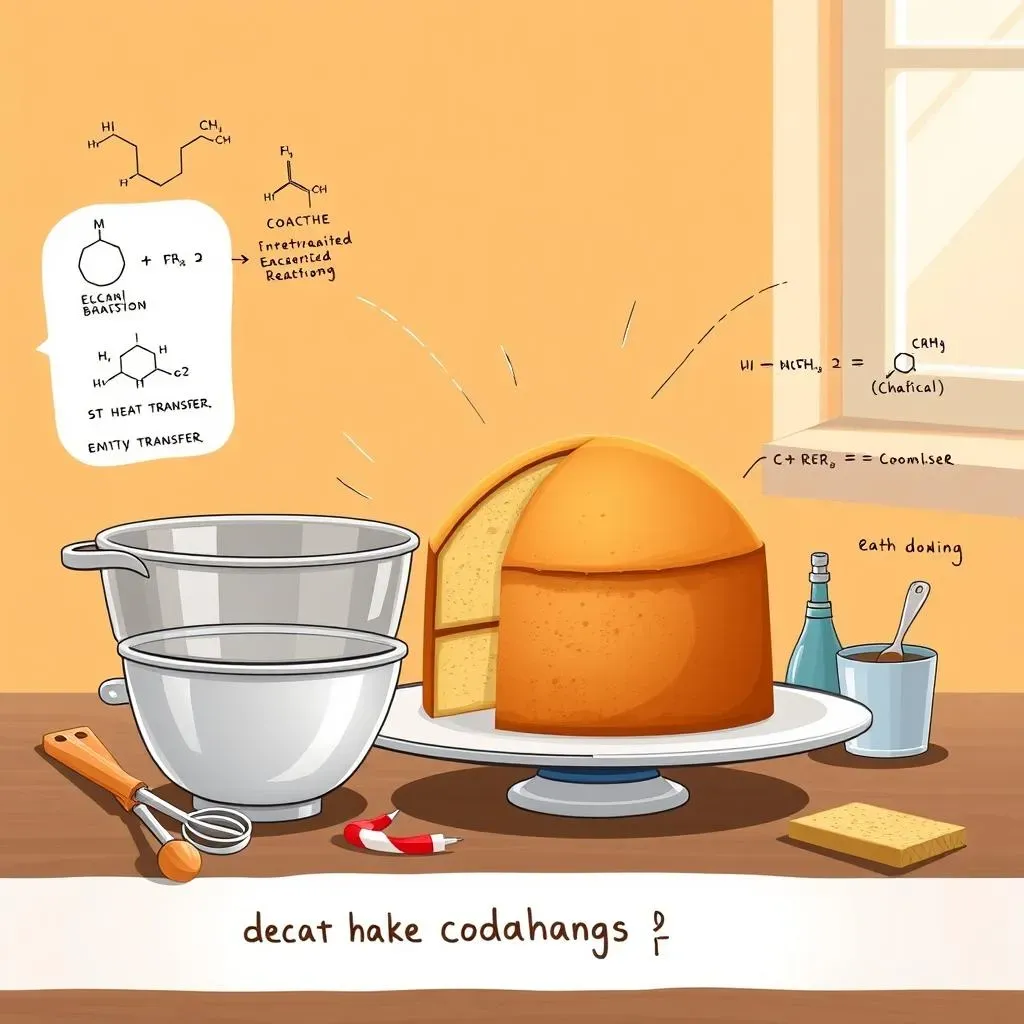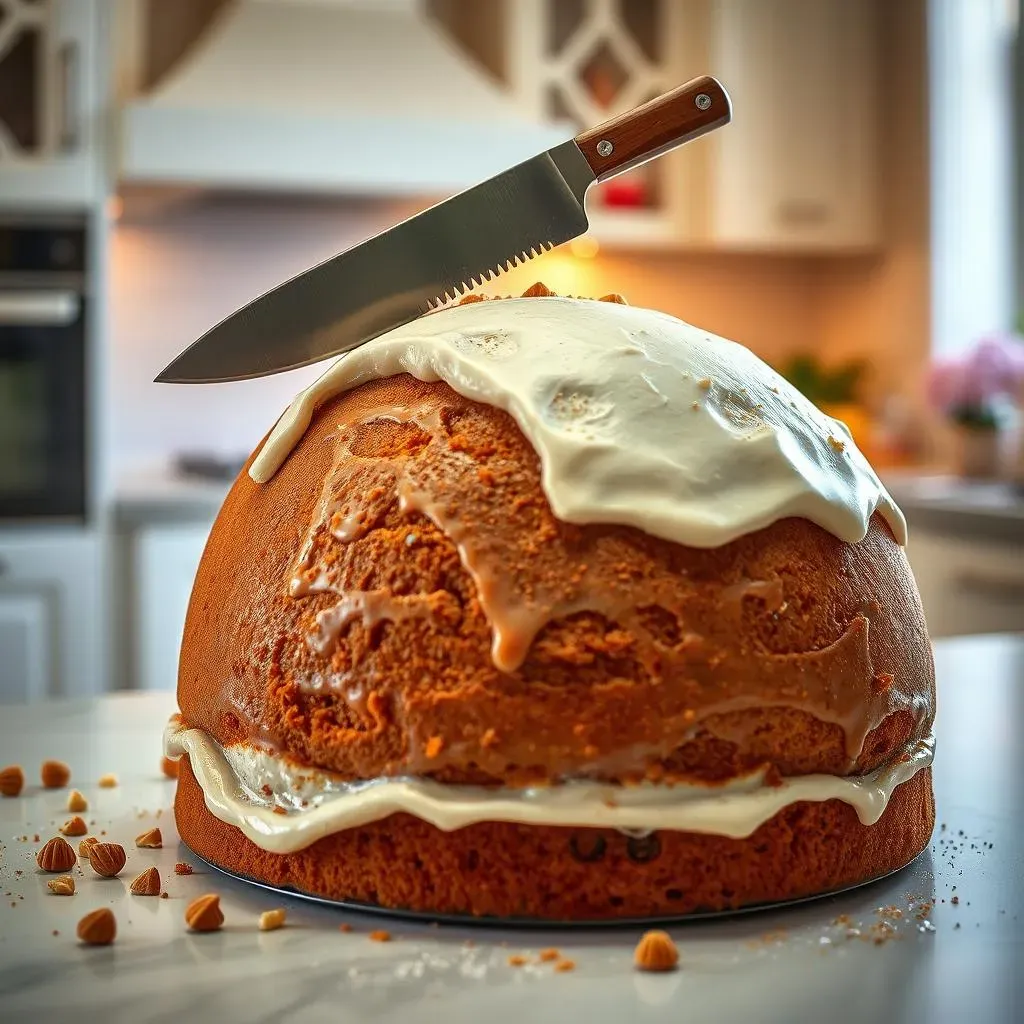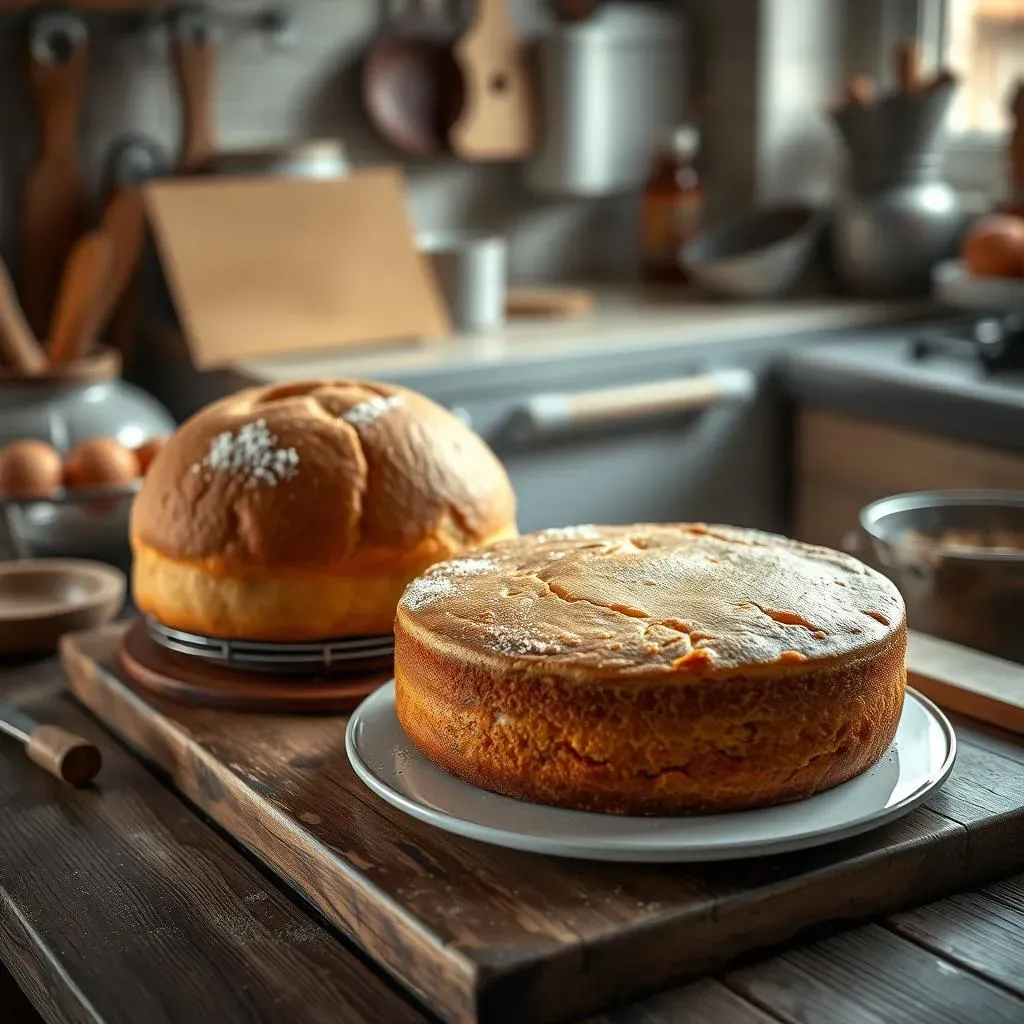Table of Contents
Ever pulled a perfectly baked cake from the oven, only to find a frustratingly prominent dome staring back at you? It's a common baking woe, and it's time to demystify it! This article tackles the age-old question: why cakes dome when baking. We'll explore the science behind this uneven rise, breaking down the factors that contribute to that unsightly peak. From oven temperature and pan materials to batter consistency and even your recipe itself, we’ll uncover the culprits. But don't worry, this isn't just a problem-identifying mission. We'll equip you with practical, easy-to-follow tips and tricks to prevent doming before it even starts, turning those frustrating experiences into baking triumphs. Whether you're a seasoned baker or a kitchen novice, this guide will provide solutions, from adjusting your oven temperature and using clever baking tools to mastering the art of batter preparation. We'll even show you how to rescue a already-domed cake, transforming a baking mishap into a delicious success. Get ready to conquer the dome and bake flawlessly flat cakes every single time!
The Science of a Domed Cake: Understanding the "Why"
The Science of a Domed Cake: Understanding the "Why"
So, you're diving into the world of cake doming? Welcome! It's a surprisingly fascinating topic. Think of a cake batter as a tiny ecosystem. It’s a complex mixture of flour, sugar, eggs, fat, and leavening agents – all interacting in a delicate dance. When you pop it in the oven, the heat causes the leavening agents (like baking powder or baking soda) to release gases. These gases create air bubbles, making the batter rise. But here's where things get interesting. The outside of the cake, closest to the hot oven walls, heats up faster than the inside. This outer layer sets more quickly, kind of like the crust of a pie. As the inner batter continues to rise, it pushes upwards against that already-set outer layer, creating the dreaded dome. It’s like trying to inflate a balloon that's already partially sealed at the top – the pressure has to go somewhere!
Another factor is oven temperature. An oven that's too hot speeds up this process dramatically. The outside sets too quickly, leaving the inside to struggle to escape, resulting in a dramatic dome. A consistent, even oven temperature is key. You can check this with an oven thermometer – a surprisingly useful tool. Many recipes call for a higher temperature, say 350°F, but often, reducing it by 10-15 degrees can make a huge difference. Remember, you can always add a few minutes to the baking time, but you can't take away a dome once it’s formed! Think of it as baking Goldilocks' cake – not too hot, not too cold, but just right.
Factor | Effect on Doming |
|---|---|
Oven Temperature (Too High) | Faster outer setting, pronounced dome |
Uneven Oven Heat | Irregular rising, potential for cracks |
Overmixing Batter | Too much air, increased doming |
The type of pan also plays a role. Darker pans absorb heat more quickly than lighter ones. That means your cake will brown and set faster on the sides, increasing the likelihood of doming. Using a lighter-colored pan or even lining the sides with foil can help distribute heat more evenly. This is like wearing a sun hat on a hot day – it helps to protect you from the intense heat. Consider using cake strips, which are basically wet bands you wrap around the pan. These help to regulate the temperature by keeping the edges of the cake from setting too quickly. They're like a gentle hug for your cake, ensuring even baking.
Finally, even your recipe itself can contribute to doming. Too much leavening agent can lead to an overly enthusiastic rise, resulting in that unwelcome peak. Conversely, too little leavening can mean a flat cake. It’s all about balance. If you're consistently getting domed cakes, carefully review your recipe and consider experimenting with the amount of leavening. Sometimes, a simple adjustment can make all the difference. Think of it like finding the perfect balance in a seesaw – too much weight on one side, and you'll tilt over.
- Oven Temperature
- Pan Material
- Leavening Agents
- Batter Consistency
Understanding the science behind cake doming is the first step towards preventing it. By considering these factors, you can significantly reduce the chances of ending up with a domed cake and instead, bake a perfectly flat, evenly risen masterpiece. Want to learn more about getting perfectly risen cakes? Check out our guide on why cakes don't rise!
Preventing the Dome: Baking Tips and Tricks
Preventing the Dome: Baking Tips and Tricks
Mastering Oven Temperature: The Goldilocks Approach
Let's talk oven temperature – it's the biggest culprit in cake doming. Too hot, and the outside sets like a cement wall before the inside even thinks about rising. The result? A magnificent dome. The solution? Lower the temperature! Many recipes suggest 350°F (175°C), but often, dropping it to 325°F (160°C) makes a world of difference. It slows down the baking process, allowing the inside to catch up. You might need to add a few minutes to the baking time, but trust me, a flat cake is worth the wait. Think of it as a slow simmer instead of a frantic boil – gentle heat for a perfect rise. Invest in an oven thermometer; your oven’s internal thermostat might be a bit of a fibber!
Using a lower temperature isn't a magic bullet, though. You also need to ensure even heat distribution. Hot spots in your oven can lead to uneven baking and contribute to doming. Rotate your cake halfway through baking to counteract any uneven heating. Think of it as giving your cake a little sunbath, ensuring every part gets its fair share of warmth. For more on baking times, check out our guide on when cakes are nearing doneness.
Temperature | Effect |
|---|---|
Too High (350°F+) | Fast outer setting, prominent dome |
Just Right (325-335°F) | Even baking, flat top |
Pan Power: Choosing the Right Vessel
Your baking pan isn't just a pretty face; it plays a crucial role in even baking. Darker pans absorb heat faster than lighter ones. This means the sides of your cake will set quickly, while the center continues to rise, creating a dome. A lighter-colored pan, such as aluminum, distributes heat more evenly. If you're attached to your dark pan, consider lining the sides with a double layer of foil to act as a heat shield. This helps regulate the temperature, preventing the edges from setting too fast. It's like giving your cake a cozy blanket, keeping it warm but not scorching.
Another clever trick is using cake strips. These are wet fabric bands you wrap around the pan. They help regulate temperature by preventing the edges from over-baking. They're like a gentle hug for your cake, ensuring even baking. Experiment with different pan materials and techniques to find what works best for your oven. For those curious about keto-friendly options, explore our selection of keto cakes.
- Use a lighter-colored pan (aluminum or silicone)
- Line the sides of the pan with foil
- Use cake strips to regulate temperature
Batter Bliss: The Perfect Consistency
The consistency of your batter is another key factor. Overmixing incorporates too much air, making the batter too fluffy. This extra air can lead to excessive rising and increased doming. Undermixing, on the other hand, can result in a flat cake. Aim for a smooth batter with just enough air incorporated. Think of it like making a perfect soufflé – airy but not overly fluffy. The right amount of air is essential for a successful and even bake.
Don't forget about your leavening agents! Too much baking powder or baking soda can lead to an overly enthusiastic rise, resulting in a dome. Conversely, too little can result in a deflated cake. Carefully measure your ingredients and follow your recipe precisely. If you're consistently getting domed cakes, consider slightly reducing the amount of leavening in your next batch. For a deeper dive into keto baking, check out our guide on making keto cakes.
“The perfect cake is a delicate balance of science and art.” – Anonymous Baker
Fixing a Domed Cake: Rescue Missions and Delicious Solutions
Fixing a Domed Cake: Rescue Missions and Delicious Solutions
The Great Trim: A Simple Solution
Okay, so your cake has a dome. Don't panic! The easiest fix is often the best: simply trim the top. Use a serrated knife or a cake leveler to slice off the dome. This creates a perfectly flat surface, ready for frosting or any other decorations. Many bakers consider this a standard part of the process, not a disaster. It’s a chance to check the crumb structure and ensure the cake is fully baked. Plus, you get to enjoy the delicious trimmed bits!
Don't worry about wasting cake; those perfectly good dome bits can be crumbled and used in cake pops, ice cream, or even as a topping for your next dessert. It's a win-win! For more on baking times, check out our guide on when cakes are nearing doneness.
- Use a serrated knife for a clean cut.
- A cake leveler ensures a perfectly flat surface.
- Don't throw away the trimmed dome – it's delicious!
The Upside-Down Approach: A Surprising Twist
Here's a fun trick: flip your cake! If the dome isn't too extreme, simply flip the cake upside down onto your serving plate. The dome becomes the base, and the flatter bottom becomes the top. This works best for cakes with a relatively even crumb and less dramatic doming. It's a quick and easy fix that often goes unnoticed. It's like a magical cake transformation!
This method is especially useful when dealing with cakes that have a slightly uneven rise but are otherwise perfectly baked. It's a simple solution that can save you time and effort. For those watching their carb intake, explore our keto cake options.
Method | Pros | Cons |
|---|---|---|
Trimming | Easy, clean cut | Some cake is lost |
Flipping | No cake lost | Works best with minor doming |
Embrace the Dome: Creative Solutions
Sometimes, the best approach is to embrace the dome! Instead of fighting it, use it to your advantage. A slightly domed cake can add a rustic charm to your dessert. You can decorate it in a way that highlights the dome, maybe using frosting to create a beautiful swirl or peak. Think of it as adding a unique architectural detail to your cake.
Consider using a cream cheese frosting or ganache to create a smooth, even surface that hides any imperfections. This is a great way to turn a baking mishap into a beautiful and delicious dessert. For those interested in lower-carb options, learn more about cakes with lowest carbs.
"Baking is a journey, not a race. Embrace the imperfections, and enjoy the process!" - A wise baker
